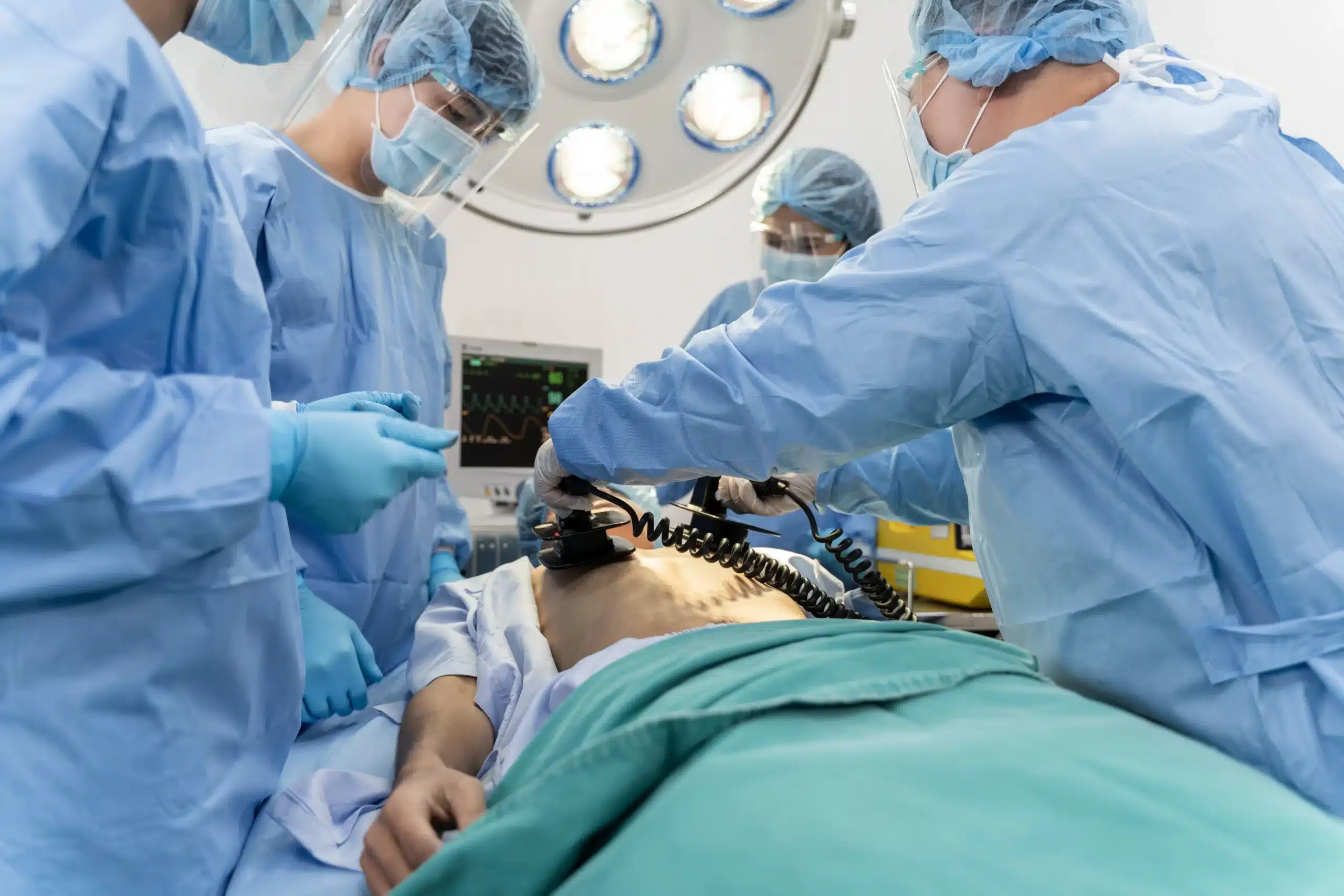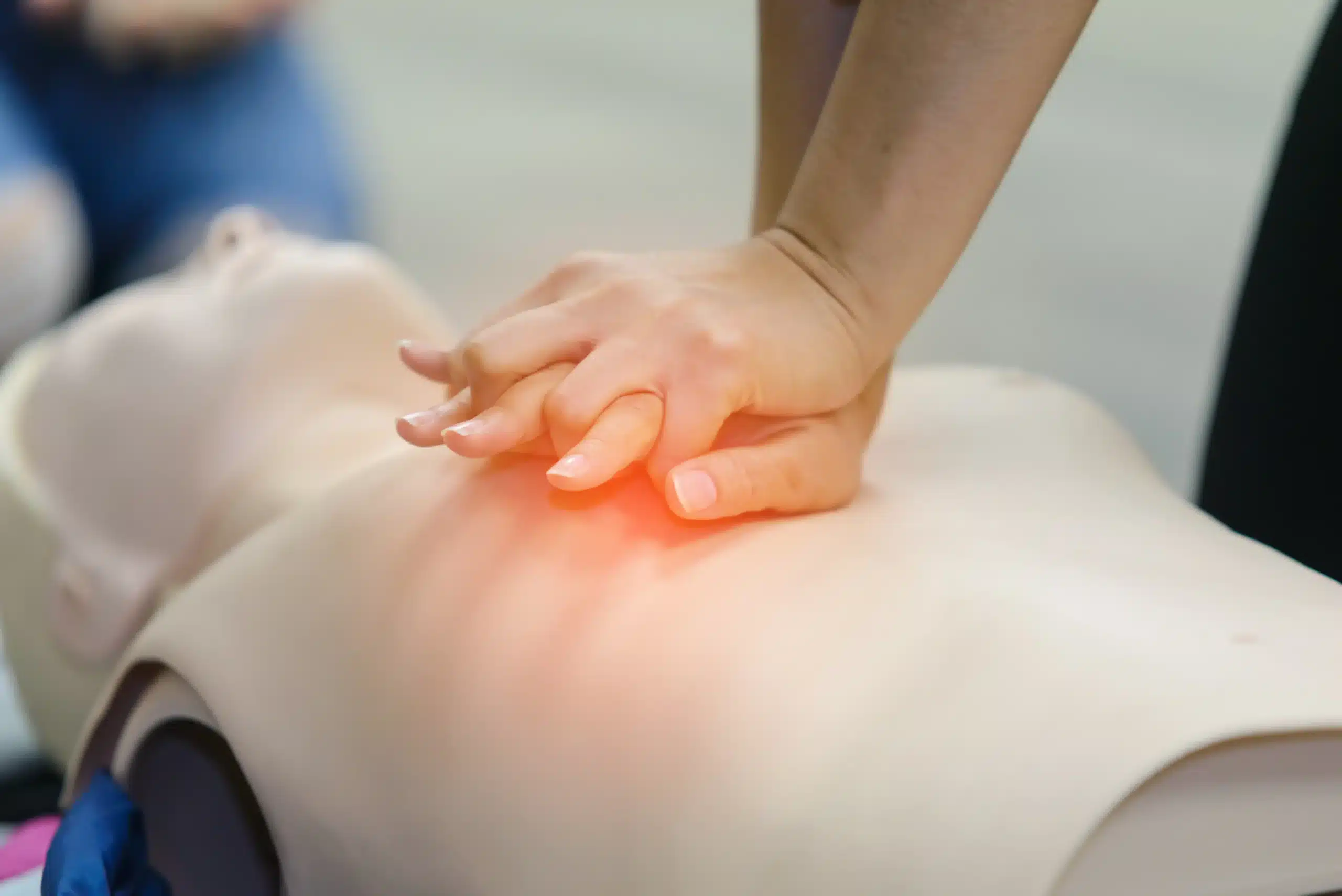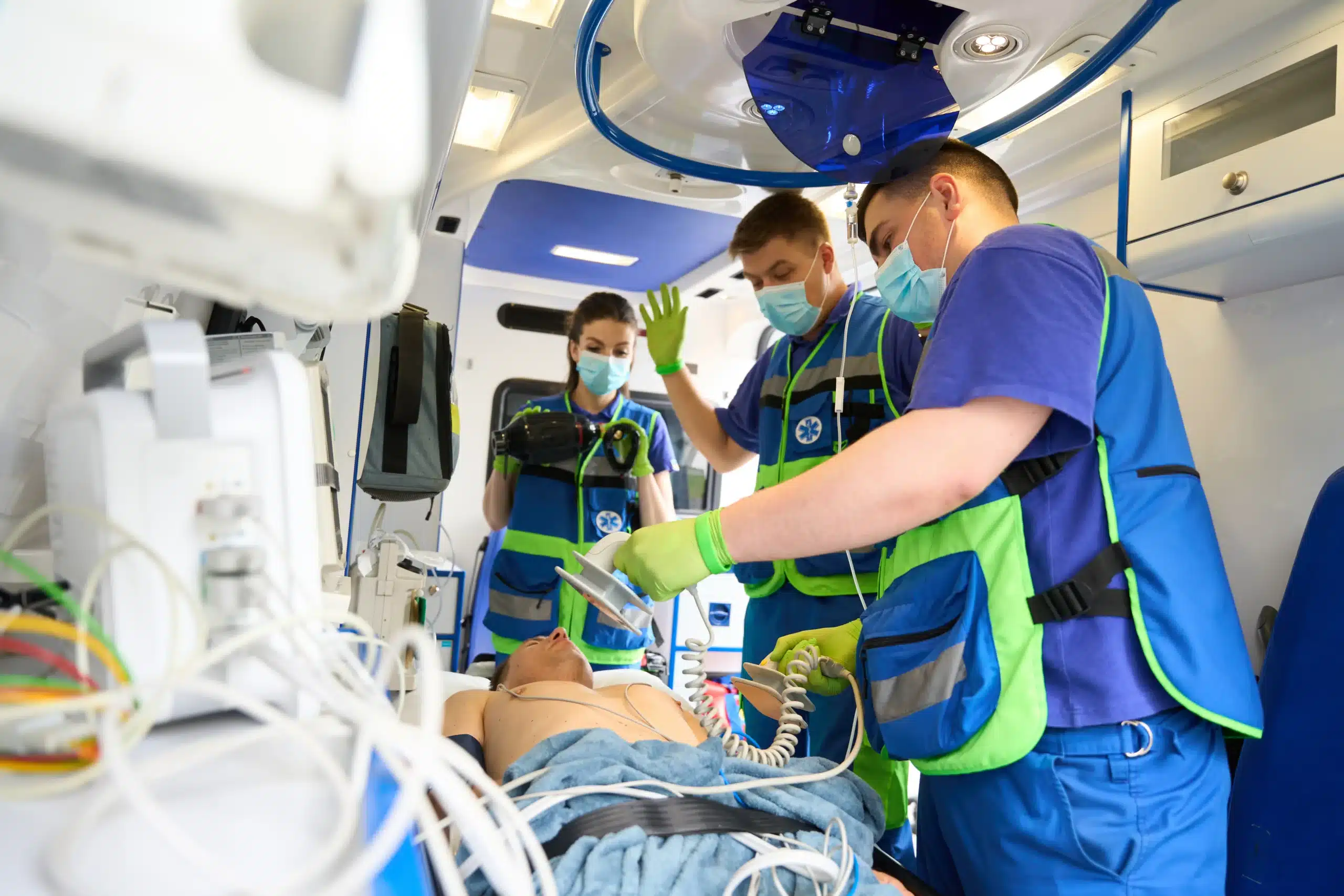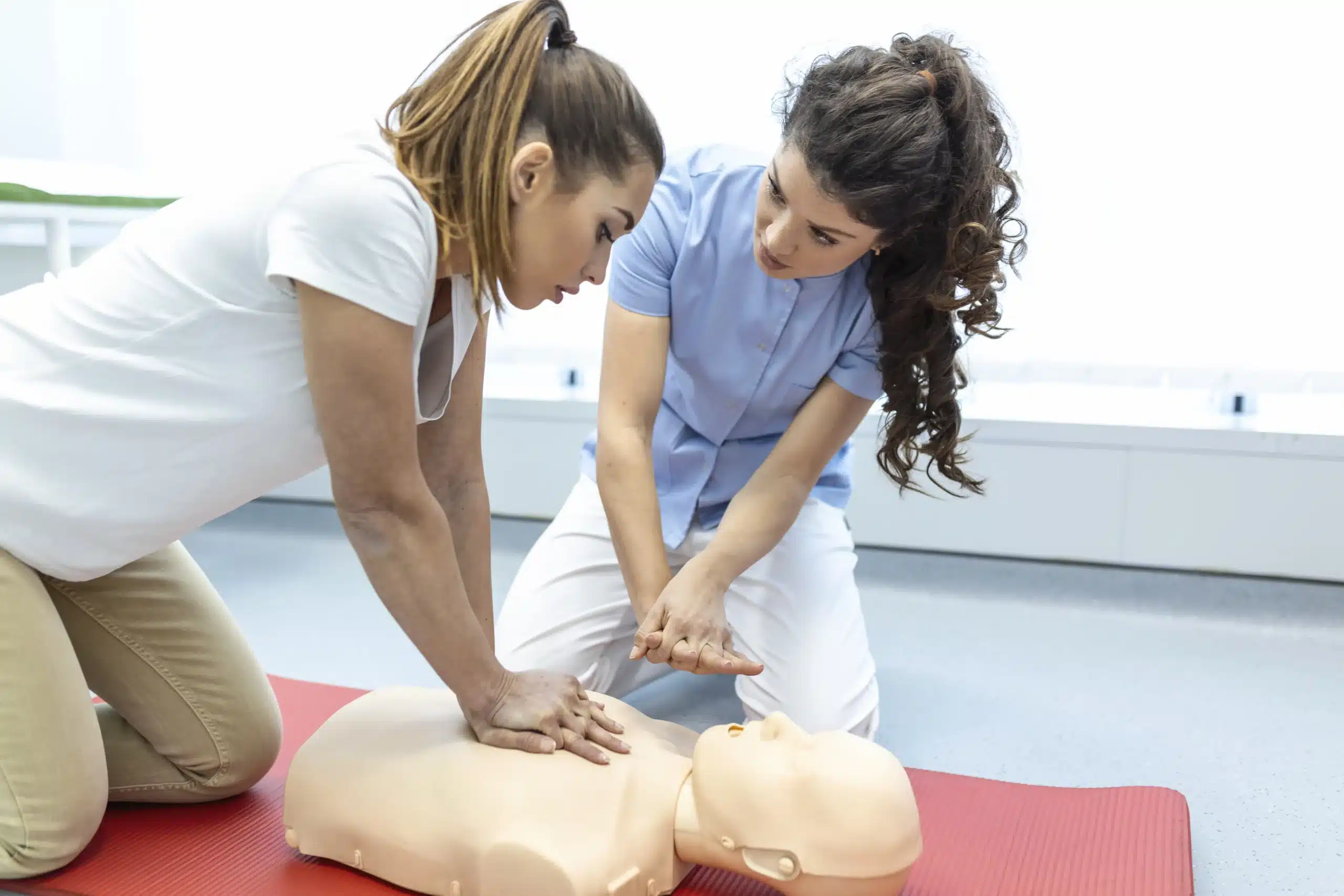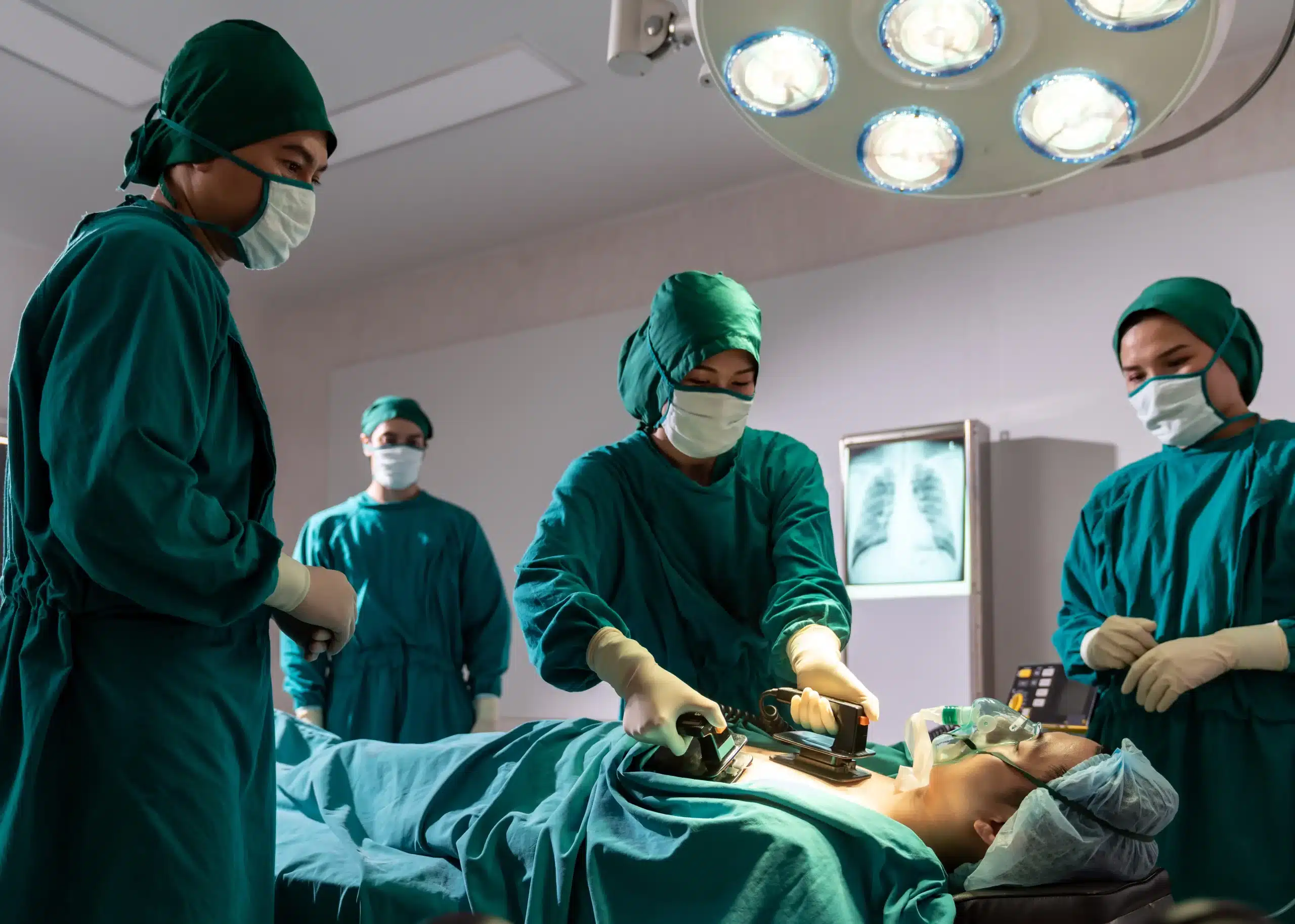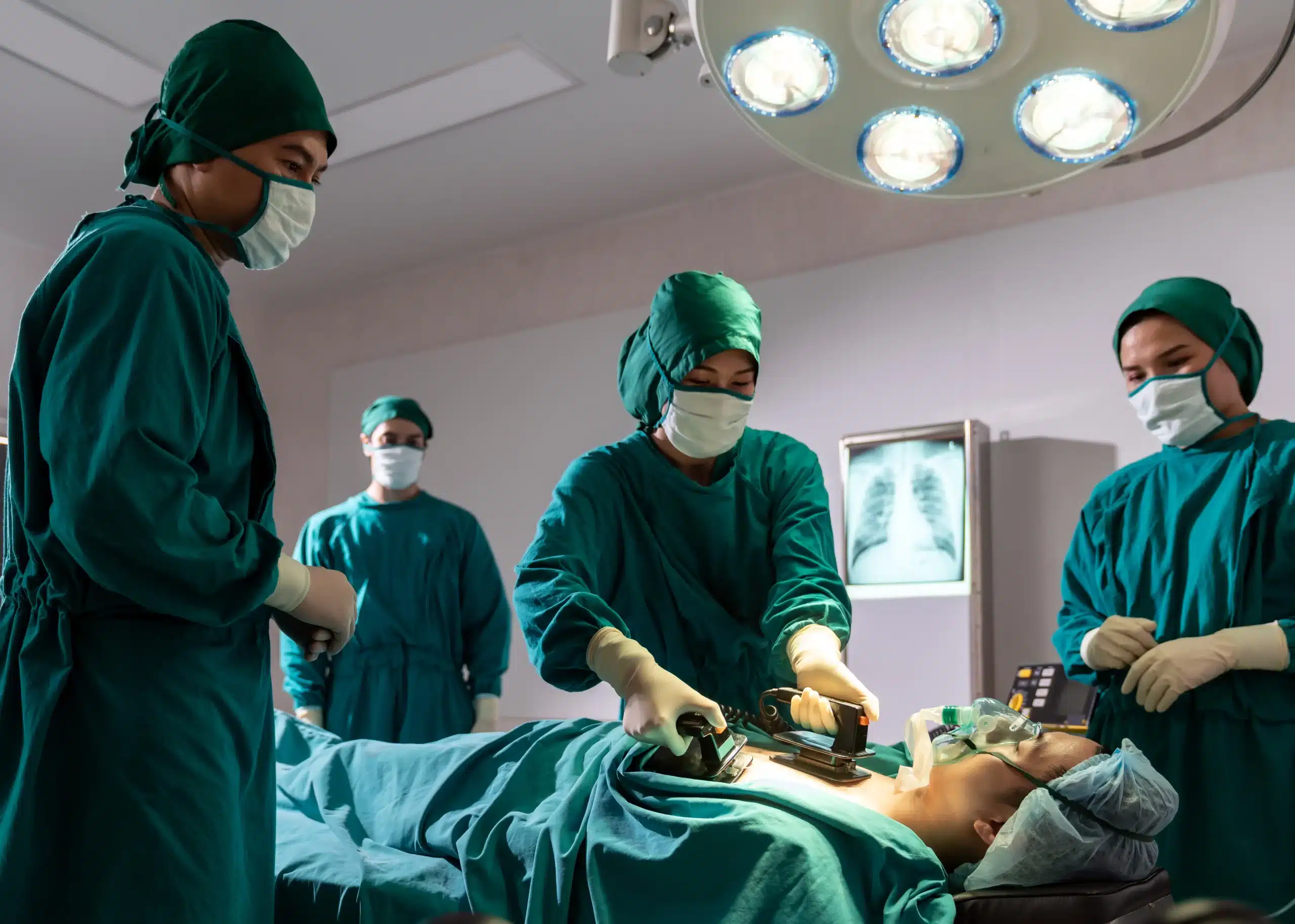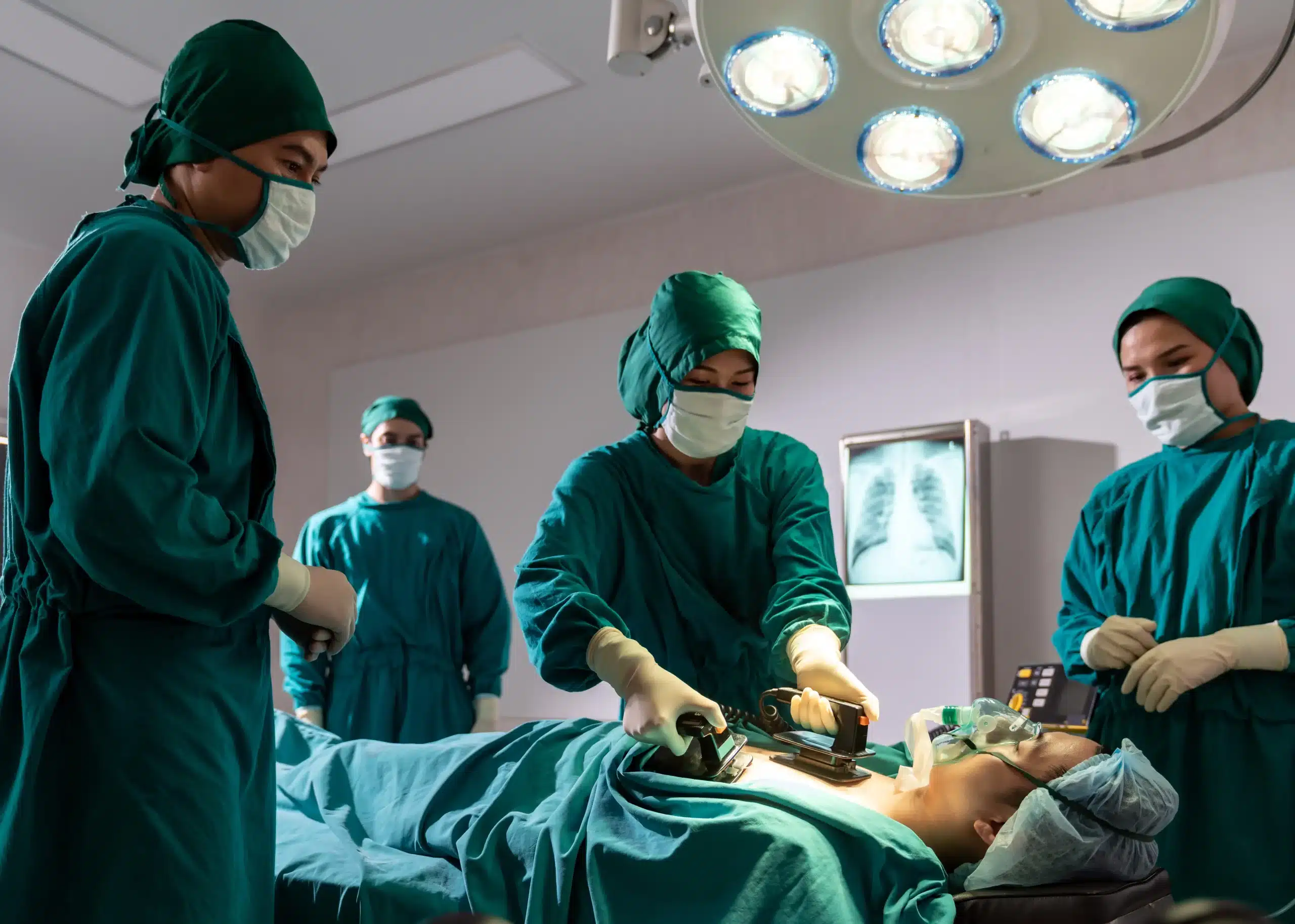Emergencies can happen anytime, anywhere. Being equipped with CPR and first-aid skills can make you a valuable asset in those critical moments. If your search for “CPR and First-aid certification courses near me in San Rafael” has brought you here, you’re in the right place. This comprehensive guide will walk you through the various CPR and first-aid certification courses available in San Rafael, catering to different needs and skill levels. We’ll explore the differences between basic CPR and advanced life support certifications, discuss various course formats and durations, and provide insights into the costs and pricing options. We’ll also highlight top training providers in the area and explain what to expect during the certification process.
Key Takeaways
- CPR and first aid skills empower you in emergencies: These skills give you the confidence to act quickly and effectively when faced with medical emergencies, potentially making a life-saving difference. Select a course format—in-person, online, or hybrid—that best fits your learning style and schedule.
- Find the right training in San Rafael: Explore a range of CPR and first aid courses in San Rafael, from basic life support to advanced certifications like BLS, ACLS, and PALS. Local providers like San Rafael CPR Classes, Safety Training Seminars, and In-Home CPR offer diverse options to meet your specific needs.
- Stay current with recertification: Regularly refresh your skills and knowledge through recertification to ensure you’re always prepared to provide the most effective care. Staying up-to-date with the latest techniques is vital for confident and effective emergency response.
What are CPR and First Aid?
What are CPR and First Aid?
CPR, or cardiopulmonary resuscitation, is a lifesaving technique used when someone has stopped breathing and their heart has stopped beating (cardiac arrest). It involves chest compressions and rescue breaths to circulate oxygenated blood to the brain and other vital organs. First aid covers a much broader range of situations, encompassing the initial help given to someone suffering from any injury or illness—from minor cuts and burns to more serious conditions like choking or fractures. Think of it as bridging the gap between the incident and the arrival of professional medical help.
Why is Certification Important?
CPR and first aid certification demonstrates that you’ve received formal training and possess the knowledge and skills to respond effectively in an emergency. While wanting to help is admirable, knowing how to provide appropriate care can significantly impact the outcome. Studies show that the faster CPR is started after cardiac arrest, the greater the chance of survival. Effective training ensures you can confidently provide assistance when every second counts. Many workplaces, especially in healthcare and childcare, require these certifications. Having these credentials can open up job opportunities and provide peace of mind for both you and those in your care.
CPR and First Aid Certification Courses in San Rafael
This section explores various CPR and first-aid certification courses available in San Rafael, California, catering to different needs and skill levels. Whether you’re a healthcare professional, childcare provider, or simply want to be prepared for emergencies, San Rafael offers several options to get certified.
CPR Certification
CPR certification equips you with the skills to respond to cardiac arrest and other breathing emergencies. It’s a vital skill, with hundreds of thousands of cardiac arrests occurring annually. The Red Cross in San Rafael offers various CPR classes and certifications, including in-person, online, and blended learning options. These courses cover essential techniques like chest compressions, rescue breaths, and how to recognize the signs of a cardiac event.
Basic Life Support (BLS)
BLS certification goes further than basic CPR, providing more in-depth training for healthcare providers and other professionals. BLS certification covers advanced airway management, AED usage, and high-quality CPR techniques. San Rafael CPR Classes offers American Heart Association-certified BLS courses, ensuring your training aligns with the latest industry standards. Their convenient hours and low-price guarantee make it accessible.
Advanced Cardiovascular Life Support (ACLS)
For healthcare professionals handling complex cardiovascular emergencies, ACLS certification is essential. ACLS courses cover advanced life-saving procedures, including ECG interpretation, drug administration, and team dynamics during resuscitation. In Home CPR offers ACLS training in San Rafael, often taught by experienced EMTs and paramedics.
Pediatric Advanced Life Support (PALS)
PALS certification focuses on the specific needs of infants and children facing life-threatening emergencies. PALS courses cover pediatric assessment, airway management, and resuscitation techniques tailored to young patients. San Rafael CPR Classes offers comprehensive PALS training, giving healthcare professionals specialized skills to care for children in critical situations.
First Aid Certification
First aid certification complements CPR training, providing the skills to manage various medical emergencies, from minor injuries to serious trauma. First aid courses cover wound care, bleeding control, fracture management, and recognizing signs of various medical conditions. The American Heart Association offers first aid certification in San Rafael, equipping individuals with the knowledge and confidence to respond effectively in emergencies. These courses are valuable for anyone, from teachers and childcare providers to individuals who want to be prepared.
Course Formats and Duration
Finding the right CPR and first-aid course depends on factors like your learning style, schedule, and budget. Let’s break down the most common course formats: in-person, online, and hybrid learning. Each has its own advantages, so you can choose the best fit for your needs.
In-Person Training
In-person CPR classes offer hands-on training and interaction with a certified instructor. This format provides a structured learning environment and allows you to ask questions and receive immediate feedback. You’ll practice techniques on mannequins and learn alongside other students, which can build confidence and reinforce skills. In-person training typically leads to a two-year certification that meets OSHA standards. Given that over 500,000 cardiac arrests occur annually, according to the Red Cross, the value of this hands-on training is clear.
Online Courses
Online CPR courses offer flexibility and convenience. You can learn at your own pace, anytime, anywhere. These courses often use videos, interactive exercises, and downloadable resources to teach CPR techniques. While online courses are a great option for those with busy schedules or limited access to in-person classes, they typically don’t provide the hands-on practice needed for OSHA certification. Course lengths vary, usually from around two to a little over four hours, depending on the content. If you’re looking for a quick overview or refresher, an online course might be a good starting point.
Hybrid Learning
Hybrid learning combines the best of both worlds, offering a blend of online and in-person training. You’ll complete the online portion of the course at your own pace, covering the theoretical aspects of CPR and first aid. Then, you’ll attend an in-person skills session to practice techniques and receive feedback from a certified instructor. This format offers flexibility while ensuring you get the necessary hands-on experience. San Rafael CPR Classes offers this blended learning approach, allowing you to tailor your learning experience to your specific needs.
Costs and Pricing
CPR certification class costs in San Rafael, much like in nearby Oakland, depend on a few factors. Things like the type of class (adult-only, child/infant, or all-inclusive), the format (online, in-person, or hybrid), and the certification level will all play a role in the final price. It’s helpful to compare options to find the best fit for your needs and budget.
Individual Course Pricing
Individual course pricing varies depending on the provider and the specific course. Basic CPR classes tend to be more affordable than advanced certifications like ACLS or PALS. Shop around and check with different providers like San Rafael CPR Classes to get a clear idea of individual course costs in the area. Don’t hesitate to call and ask questions—a reputable provider will be happy to walk you through their pricing structure.
Package Deals and Discounts
Many training centers offer package deals that bundle multiple courses together, often at a discounted rate. This can be a great option if you need certification in both CPR and First Aid, or if you’re a healthcare professional completing BLS, ACLS, and PALS. San Rafael CPR Classes frequently offers bundled courses, so check their website for current deals. Sometimes, providers also offer discounts for students, seniors, or groups, so it’s always worth asking.
Group Rates
If you’re coordinating training for a group, such as a workplace or community organization, look for providers that offer group discounts. San Rafael CPR Classes is known for providing group rates for BLS training, as well as other courses like ACLS, PALS, and First Aid. Getting certified as a group can be a cost-effective and convenient way to ensure everyone receives the necessary training. Contact providers directly to discuss your group’s specific needs and negotiate the best possible rate. They can often tailor a package to fit your requirements and budget.
Top CPR and First Aid Training Providers in San Rafael
Finding the right CPR and first-aid training can feel overwhelming with so many options. To simplify your search, I’ve compiled a list of reputable providers in San Rafael. This list includes national organizations, local businesses, and options for in-person or online learning, so you can find the best fit for your schedule and learning style.
San Rafael CPR Classes
San Rafael CPR Classes offers a variety of courses, including CPR, BLS, ACLS, PALS, and first-aid training. They’re known for excellent customer service and a low-price guarantee. They conveniently serve San Rafael, Corte Madera, and Fairfax, and offer an RQI program for medical professionals seeking efficient recertification. Consider their American Heart Association BLS course if you need this certification.
Safety Training Seminars
Safety Training Seminars is a woman-owned, AHA Training Center providing high-quality courses in BLS, ACLS, PALS, CPR, and first aid. With classes offered daily in San Rafael and nearby cities, they make scheduling easy.
In-Home CPR
If you prefer training at your location, In-Home CPR brings the classroom to you. They offer ASHI, Red Cross, and AHA-certified courses in CPR, BLS, and first aid for both businesses and individuals in San Rafael. Their CPR/AED certification is especially useful for non-medical professionals.
American Red Cross
The American Red Cross is a trusted provider of CPR and first-aid training. Their certification courses give individuals the confidence to respond effectively during emergencies. Find a class near you on their website.
ProTrainings
ProTrainings offers various CPR and first-aid courses and keeps their curriculum aligned with the latest research and guidelines, like the 2020 AHA guidelines for CPR. This ensures you learn the most effective, up-to-date techniques.
National CPR Foundation
The National CPR Foundation provides a range of CPR and first-aid courses designed for both individuals and organizations. Their focus is on equipping participants with the skills and knowledge to handle emergencies.
What to Expect During Certification
Getting CPR and first-aid certified is a rewarding experience. Here’s a glimpse of what you can expect during your certification journey:
Course Content and Curriculum
CPR and first-aid certification courses cover essential life-saving skills. You’ll learn to recognize the signs of a medical emergency and how to perform CPR on adults, children, and infants. You’ll also learn to provide basic first aid for common injuries like burns, cuts, and choking. Courses often include instruction on using an automated external defibrillator (AED). The curriculum is designed to be comprehensive, equipping you with the knowledge and skills to respond effectively in emergencies. Many courses, like those offered by the American Heart Association, cater to different audiences, from healthcare providers to the general public. Learn more about our CPR and First Aid Certification courses.
Hands-On Practice and Skill Development
CPR certification isn’t just about learning the theory—it’s about mastering the techniques. Expect plenty of hands-on practice using mannequins and training equipment. You’ll work with instructors to refine your CPR technique, ensuring proper hand placement, compression depth, and rhythm. First-aid training also involves practical exercises, like applying bandages and splints. This hands-on approach builds your confidence and prepares you to apply your skills in real-life situations. Instructors often encourage critical thinking, helping you adapt your skills to different scenarios. Check out these strategies to improve CPR training.
Assessment and Certification Process
To earn your certification, you’ll need to demonstrate your proficiency in both CPR and first aid. This typically involves a skills test where you perform CPR and first aid techniques on a mannequin in front of an instructor. Some courses also include a written exam to assess your understanding of the material. Once you successfully complete the course requirements, you’ll receive a digital certificate, usually valid for two years. This certification validates your skills and allows you to provide CPR and first aid assistance with confidence. For more on CPR and BLS certification, see the American Heart Association’s resources.
Instructor Qualifications and Training Standards
Knowing an instructor’s qualifications is key when choosing a CPR and first-aid certification course. A well-trained instructor significantly impacts your learning experience and how prepared you’ll feel for real-life emergencies. This section discusses the credentials and ongoing education you should look for in a CPR instructor.
Required Credentials
Instructors at reputable training centers, like Safety Training Seminars, are typically certified by nationally recognized organizations such as the American Heart Association (AHA). This certification ensures instructors have met rigorous standards and possess up-to-date knowledge of CPR techniques. Many CPR instructors also have backgrounds as EMTs or paramedics, bringing valuable real-world experience to the classroom, as highlighted by providers like In Home CPR. When researching courses, confirm instructors hold valid certifications from respected organizations. This ensures you receive high-quality training from qualified professionals.
Ongoing Education Requirements
CPR techniques and guidelines evolve with ongoing research and improved best practices. Guidelines are reviewed and updated approximately every five years. It’s crucial for CPR instructors to participate in continuing education to stay current with the latest advancements. Look for training providers who emphasize ongoing training for their instructors. This commitment to continuing education ensures instructors teach the most current and effective techniques. Regular CPR refresher courses are one way instructors maintain their skills and knowledge. Improving CPR training is a continuous process, and instructors who prioritize ongoing education demonstrate a dedication to providing the best possible training. This benefits both the instructors and their students, ensuring everyone stays up-to-date with life-saving techniques.
Choose the Right Course
Finding the right CPR and First-Aid certification course is key to preparing you for emergencies. It’s more than just ticking a box; it’s about equipping yourself with the skills and confidence to potentially save a life.
Factors to Consider
When selecting a course in San Rafael, think about what you need from your training. Are you a healthcare provider needing to renew your BLS certification? Or are you a parent looking for a basic CPR and First-Aid class to feel prepared? The American Heart Association offers a range of courses tailored to different needs, from healthcare professionals to the general public. Consider your current skill level, the types of emergencies you might encounter, and how in-depth the training needs to be. For childcare providers, the EMSA Child Care Health & Safety program might be a good fit.
Matching Courses to Professional Requirements
Your profession likely has specific requirements for certification. Make sure the course you choose aligns with those standards. For example, nurses need a course that meets their licensing board’s requirements. San Rafael CPR Classes offers various American Heart Association courses, including BLS, ACLS, PALS, CPR, and First-Aid, to meet the needs of different healthcare professionals. If you’re training a group, ask about group rates for BLS training, which can be more cost-effective. Choosing the right course ensures you comply with workplace requirements and have the specific skills you need. For additional resources, check out our Northern California CPR Directory. And don’t forget our low price guarantee.
Why Recertify Regularly?
CPR and first-aid skills are essential for responding effectively to emergencies. But like any skill, they can diminish over time. Regular recertification isn’t just about maintaining a valid card—it’s about ensuring you’re prepared to act confidently and correctly when it matters most.
Keeping Skills Sharp
Think of CPR like riding a bike. While you might not forget the general concept, the specific techniques and the muscle memory required can fade. While any attempt at CPR is better than none, refreshing your skills through recertification ensures you can deliver the most effective care. The Red Cross emphasizes that “skills can fade within months,” highlighting the importance of staying current. Regular practice reinforces the correct procedures, keeping your skills sharp and your confidence high.
Staying Updated on Latest Techniques
Medical guidelines and best practices are constantly evolving, based on the latest research and data. CPR techniques are no exception. CPR guidelines are typically reviewed and updated every five years, meaning crucial changes in technique could impact how you respond in a crisis. Recertification courses keep you informed of these updates, ensuring you’re using the most effective methods. Staying current with these changes is vital for providing the best possible care and improving outcomes. Recertification isn’t just about checking a box—it’s about committing to providing the highest standard of care.
Get CPR and First Aid Certified
Ready to learn CPR and first aid? Getting certified is straightforward, and with several excellent options in San Rafael, you can find the perfect fit for your schedule and learning style. Quick note: CPR and first-aid certifications are separate, though many providers offer combination courses. It’s worth getting certified in both to be truly prepared.
If you’re looking for comprehensive training and flexible scheduling, check out San Rafael CPR Classes. They offer various courses, including BLS, ACLS, PALS, and First Aid, with a low-price guarantee. They also have a unique RQI program for medical professionals seeking streamlined recertification. For those in childcare, their EMSA Child Care Health & Safety course covers essential safety practices. Serving San Rafael, Corte Madera, and Fairfax, they’re a convenient local option. They even offer a Northern California CPR directory if you’re looking for resources outside of Marin.
The American Red Cross also provides CPR and first-aid certification courses in San Rafael, with in-person, online, and blended learning formats. With the high number of cardiac arrests annually in the US, knowing CPR is a critical skill.
For personalized instruction, consider In-Home CPR. Their EMT and paramedic instructors bring the training to your home or workplace. This is an excellent option for group training or busy individuals. No matter your choice, getting certified gives you the skills to handle emergencies with confidence.
Related Articles
- CPR Certification in Fairfax: Your Complete Guide – San Rafael CPR Classes
- CPR & First Aid in Corte Madera: Your Complete Guide – San Rafael CPR Classes
- Find First-Aid Classes Near Me: Your Certification Guide – San Rafael CPR Classes
- Workplace CPR and First-Aid Training Importance
- CPR Renewal in Fairfax: Your Complete Guide – San Rafael CPR Classes
Frequently Asked Questions
How do I choose between online and in-person CPR training? Think about your learning style and schedule. If you prefer hands-on learning and direct interaction with an instructor, in-person training is a great choice. If you need more flexibility, an online course might be a better fit. Just remember that online courses may not include the hands-on skills assessment required for some certifications. A hybrid course offers a good balance—online learning combined with an in-person skills session.
What’s the difference between CPR and First Aid certification? CPR focuses specifically on life-saving techniques for cardiac arrest and breathing emergencies. First Aid covers a broader range of situations, from minor injuries like cuts and burns to more serious conditions like choking or allergic reactions. While distinct, these skills complement each other, and many courses offer combined CPR and First Aid certification.
How much does CPR certification cost in San Rafael? The cost varies depending on the course type, format (online, in-person, or hybrid), and the training provider. Basic CPR courses are generally less expensive than advanced certifications like BLS, ACLS, or PALS. Many providers offer package deals or group discounts, so it’s worth comparing options. Contact San Rafael CPR Classes directly for specific pricing information. They offer a low-price guarantee, so you can be confident you’re getting a good value.
How often do I need to renew my CPR certification? CPR certifications are typically valid for two years. Recertification is essential to keep your skills sharp and ensure you’re up-to-date with the latest guidelines, which are often revised every five years. Even if you remember the basics, regular practice and updated training are crucial for responding effectively in a real emergency.
What if I need CPR training for a group, like my workplace? Many providers, including San Rafael CPR Classes, offer group discounts and can tailor training to your organization’s specific needs. Contact them directly to discuss options and pricing for group training. They can often create a customized package that fits your budget and schedule.
